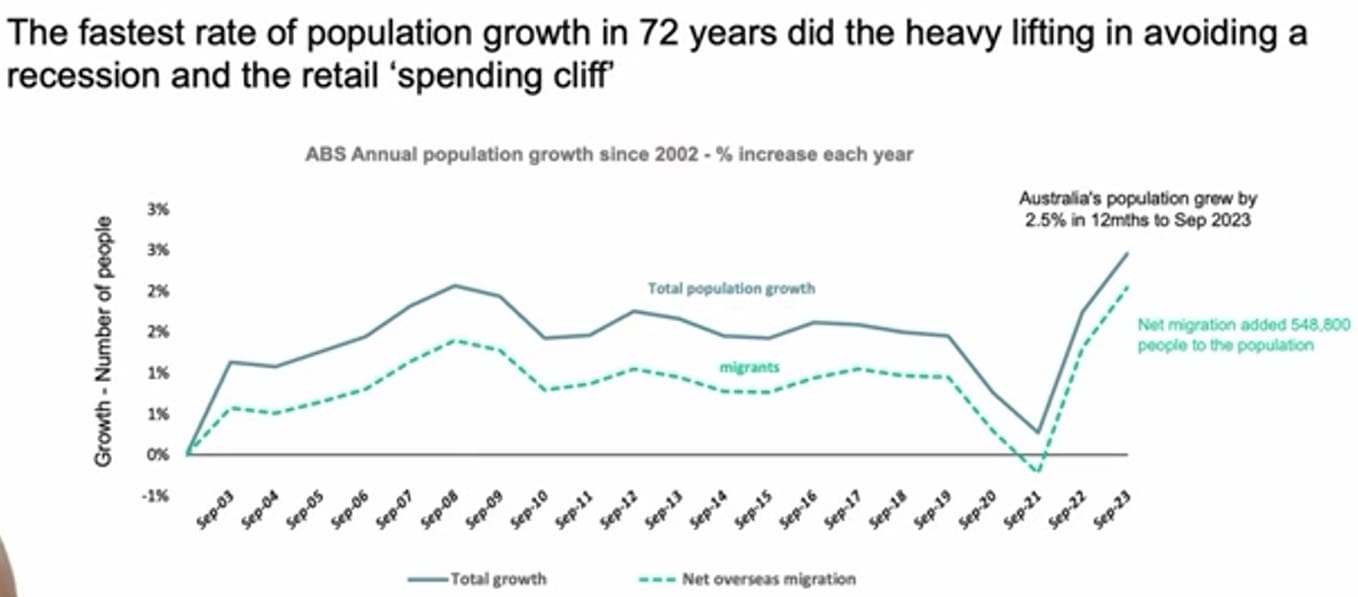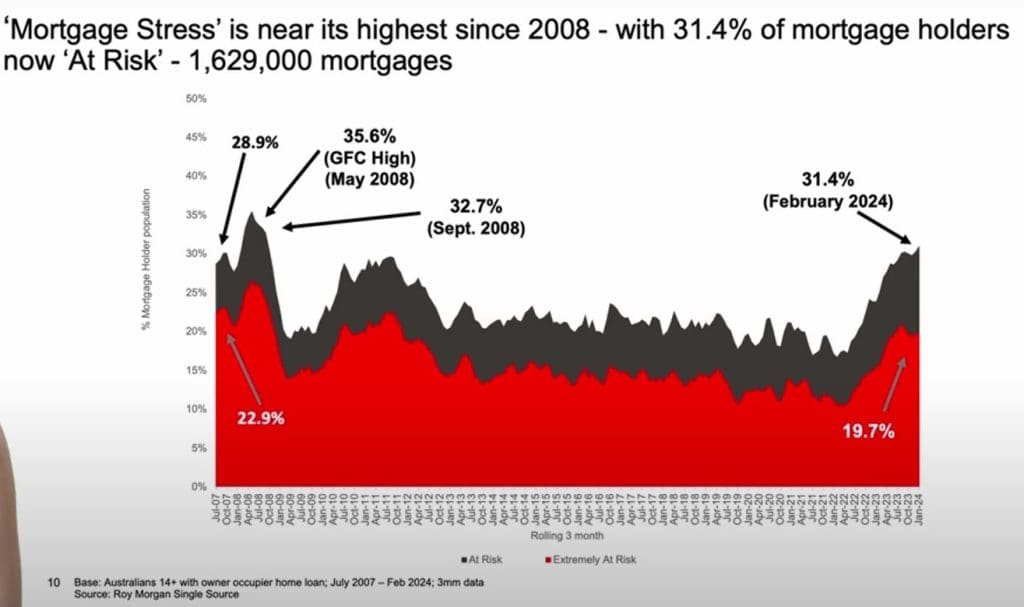
AFTER a tough 2023, Australian consumer confidence is on the rise; however, it remains patchy, a new consumer survey has found.
Consumer trends company Roy Morgan has released its Future of Retail Business report, exploring how consumers are coping in this year’s pressured environment; who is the hardest hit; how Australians are adjusting their spending; and which demographics still have spending power.
 The report found that record population growth is doing the ‘heavy-lifting’ in keeping Australia out of technical recession.
The report found that record population growth is doing the ‘heavy-lifting’ in keeping Australia out of technical recession.
Australia’s population has soared at a record rate over the last year with population growing by more than 650,000 in the year to September 2023 – representing annual growth of 2.5 percent. That’s the highest rate in 72 years, since the post-War boom.
More than 80pc of that growth was driven by net immigration, representing an additional 548,800 people over the last 12 months.
The rate of population growth has exceeded the annual rate of growth in retail sales since June 2023.
The survey found that consumer confidence has recovered from the lows of 2023, but while still well below neutral (currently indexed at 83.5, when ‘neutral’ represents 100), it still represents clear improvement on 2023 when the index was below 80 for more than 30 weeks.
The survey found the cost-of-living crisis is not being felt by everyone, but young families – representing 4.3 million people – are bearing the brunt of rising prices and high inflation.
Annual consumer spending for the 4.3 million people in young families with children aged under 16 is down 15pc from a year ago. For those aged 25-34 (many of the same people), spending is down 16pc on a year ago.

But other cohorts such as homeowners and 14–24-year-olds still have spending power:
In contrast there has been an increase in consumer spending of 10pc for people aged 14-24 and smaller increases for those aged 50+. Homeowners, who comprise around a third of all Australians, have also increased their spending power over the last year.
Consumers report spending less on some categories, although fresh food, including meat, was not included in the survey.
Online spending growth
Online spending increased 12pc in the last six months compared to six months earlier, in line with trends being reported by major supermarket groups Coles and Woolworths.
In the year to March 2024 there was around $60 billion spent online (non-food categories), and despite a flat retail market overall, spending in the six months to March 2024 was almost $32 billion – up 12pc on the six months to September 2023 ($28 billion). This level of increase was not seen in the non-online retail spending figures for these periods.
Retail forecast for 2024 shows subdued growth
Roy Morgan’s monthly Retail Sales forecasts don’t hold much joy for the remainder of the year with projected retail sales growth of only 1.2pc for the full year – below the rate of population growth (+2.5pc) and below the usual rate of annual retail growth of 3-4pc.
Retail sales of food (+1.8pc to $171.2 billion) are expected to be twice as fast as non-food (+0.9pc to $258.8b) – but still low. The latest RBA Inflation forecast for the 12 months to December 2024 is for CPI of 3.2pc.
Roy Morgan’s retail, social & consumer trends expert Laura Demasi said 2024 was set to be another transition year as Australian consumers continued to navigate the COVID hangover – shaped by the impact of interest rate rises and broader cost of living pressures which continue to dampen consumer confidence.
“This environment will maintain pressure on already flattening retail sales throughout the year,” she said.
“But it’s important to remember that there are still significant cohorts in the Australian population with plenty of spending of power – those unaffected by interest rate rises and those with the income and wealth buffers to absorb the increases.”
“The ‘cost-of-living crunch’ has also created the perfect storm for the rise of surprise winners in this environment – online marketplaces Amazon, Shein and Temu who together have helped drive a rise in spending online in the last 6 months and are disrupting retail to the tune of $8 billion in annual sales.”
Roy Morgan’s survey of the most trusted brands in Australia showed that bricks-and-mortar retailers dominate the consumer trust space, filling nine out of the top ten positions.
The usual favourites are clustered in the top five including Australia’s ‘Most Trusted Brand’ – Bunnings – followed by the big supermarkets Woolworths, ALDI and Coles – although the supermarkets have lost ground recently.
In contrast, online retailers fill five of the top six positions as the ‘Most Distrusted’ retailers despite their impressive growth in recent years. The most distrusted retailer is Amazon, followed by furniture and electrical giant Harvey Norman and new entrants Shein and Temu with Wish and Kogan filling out the top six.
Source: Roy Morgan




HAVE YOUR SAY